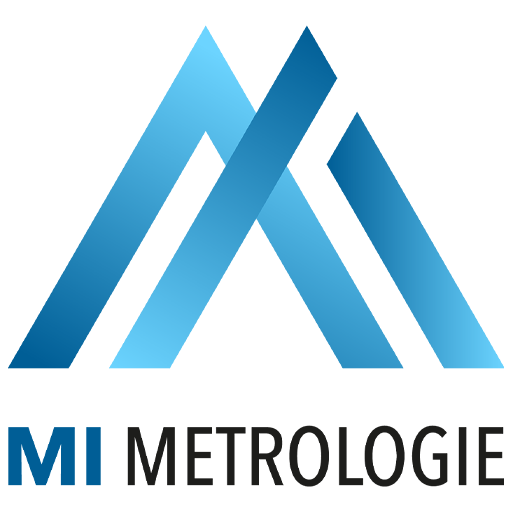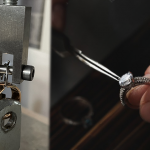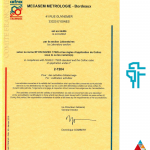Metrology is the science of measurement and measurement units. It is used in various fields to ensure accuracy and reliability of measurements, whether it be in industry, research, healthcare, or the environment.
All about the science of measurement
To measure is to compare! Man is constantly trying to compare physical quantities, which is part of metrology. Here is a definition, as well as an explanation of the two concepts of calibration and uncertainty. You will learn all about the organizational system set up at the international level. Learn about the common uses of metrology in the verification of the quality of industrial products.
Metrology is the science of measurement
Derived from the Greek metron meaning “meter” (or measurement) and logos meaning “science”, the term metrology etymologically means the science of measurement. The BIPM (Bureau International des Poids et des Mesures) is the international organization in charge of this science. The member countries work together on processes related to reference standards in each physical quantity. The bureau is also responsible for the publication of the International System of Units (SI)
The measurement of a quantity and its unit
Measurement is an omnipresent act in our daily lives. Analyzing a product is commonplace in both scientific laboratories and industrial settings for quality control of manufactured goods. Measurement involves comparing one quantity to another, requiring products to be comparable to a reference. The measuring device must also be properly calibrated.
- Set of operations establishing, under specified conditions, the relationship between the values of the quantity indicated by a measuring device or a measuring system, or the values represented by a material measure or by a reference material, and the corresponding values of the quantity realized by standards.
Measurement of a quantity is characterized by a numerical value expressed in an SI unit, along with an associated measurement uncertainty.
References provided by the French metrology network
National metrology institutes provide, with the best uncertainty, the national references for 7 physical quantities. Among these quantities, length, mass, and temperature are expressed in SI units (e.g. meter, kilogram, or Kelvin).
Calibration and uncertainty: the 2 reference principles of measurement.
Voici quelques explications sur ces deux notions essentielles à la métrologie.
Here are some explanations of these two essential concepts in metrology
Calibration of measuring instruments is an essential step in metrology. Indeed, any measurement process involves a measuring device. From a simple measuring tape to a complex electronic instrument, this instrument must be invariant over time. Therefore, it must undergo calibration using one or more standards.
The uncertainty associated with the results of a measurement.
According to the V.I.M., International Vocabulary of Basic and General Terms in Metrology, the uncertainty of measurement is a parameter, associated with the result of a measurement, which characterizes the dispersion of the values which could be reasonably attributed to the measurand, with :
Parameter: standard deviation or a multiple of it, half-width of a determined confidence interval, etc…
Measurement: value of a measurement
Measurand: measured quantity (example: error of indication)
The uncertainty of measurement makes it possible to quantify the influence of these various factors. It is therefore used to :
– measure the quality of a result
– compare results between them
The “5M” method is used to evaluate the sources of measurement uncertainty.
The manpower is the person who performs the measurement.
The means is the measuring device.
The measurement method can be direct or indirect.
The medium is the environment (humidity, temperature, radiation level, etc.) in which the measurements are made.
The material has different physical properties.
The uncertainty of a measurement takes the form of a standard deviation (uc).
To which must be added a factor of expansion k according to the formula U = k.uc
The most frequently encountered factor is k=2
The scientific organization of metrology
The science of measurement is organized from the international level to its declination in the world of industry. Let’s focus on this organization.
Metrology at the international level
The role of the BIPM is to produce the standards, and then to compare national and international versions. It defines the units of measurement and ensures metrological homogeneity between the laboratories of its member countries.
Focus on the National Laboratory of Metrology and Testing in France
The role of the Laboratoire National de Métrologie et d’Essais (LNE) is to maintain national reference standards. It coordinates all French metrology organizations and their international representation. It also has a duty to enable each company to remain up to date in terms of metrology.
The declination at the level of laboratories and industry
Within the quality department of a company, monitoring of metrology must be organized. A process of metrological monitoring of the company’s measuring equipment is required.
To do so, metrology laboratories are an essential link in the process of monitoring, managing and monitoring measuring equipment for industrial companies.
Thanks to their specialization and skills, they can take care of the calibration and verification of measuring equipment while ensuring the connection of the results to the International System of Units (SI) through, for example, their Cofrac accreditation domains according to the NF EN ISO/IEC 17025 standard. Their accreditation scopes are available on the Cofrac website: www.cofrac.fr.
The main uses of metrology to improve industrial product quality
The use of metrology in the industry sector allows the verification of the conformity of the manufactured product with the specifications. The aim is to improve quality and the performance of the company.
Dimensional quality controls
The immediate application of metrology in the company is the implementation of dimensional controls. The surface controls, the 2D or 3D measurements allow the verification of the conformity of the products to the standards and to the specifications of the customer. The values are taken either by contact or by optical measurement.
Calibration and verification of measuring instruments.
Calibration and verification of measuring instruments are essential for all physical quantities to ensure that the obtained results conform to the maximum allowable deviations (MAD) defined by a standard or specification, for example, and to demonstrate the traceability of the obtained results to the International System of Units (SI).
Length: from a simple meter to a measuring bench.
Time: chronometers or frequency meters are concerned.
Mass: any mechanical or electronic scale.
Pressure: for pressure sensors and manometers.
Temperature: thermometers or ovens.
Force: tensile testing machines and dynamometers, among others.
All measuring instruments require regular calibration, either on-site or in the laboratory, depending on the instrument’s accuracy.
The Mecasem group is a major player in the field of metrology due to its diverse skills in the majority of physical quantities, the recognized competence of its major clients in different sectors of activity, and its Cofrac accreditations, which can be consulted on the website www.mecasem.com.
Do you need to carry out precision measurements or instrument calibrations? Mecasem offers its metrology and calibration services. Don’t hesitate to ask us for a quote!
For more information: https://www.mimetrologie.com/our-services-training/?lang=en





